Here're 6 fun facts about the rare bird that flew 6,948 kilometers from Finland to Kenya
undefined
- The rare bird that was caught in a fishing net was spotted by a local resident Walter Oloo who reported to Kenya Wildlife Service officials in Siaya county.
- In a statement, KWS Director General Paul Udoto, said the bird is currently being monitored by the KWS veterinary team.
- Business Insider SSA decided to go on a fun bird watching expedition to learn more about this rare commonly known as an Osprey but whose scientific name is Pandion haliaetus.
On Thursday, a rare bird believed to have migrated from Finland and flown over 6,000 kilometres to reach Kenya was fished out of the waters of Lake Kanyaboli in Siaya County.
The rare bird that was caught in a fishing net was spotted by a local resident Walter Oloo who reported to Kenya Wildlife Service officials in Siaya county.
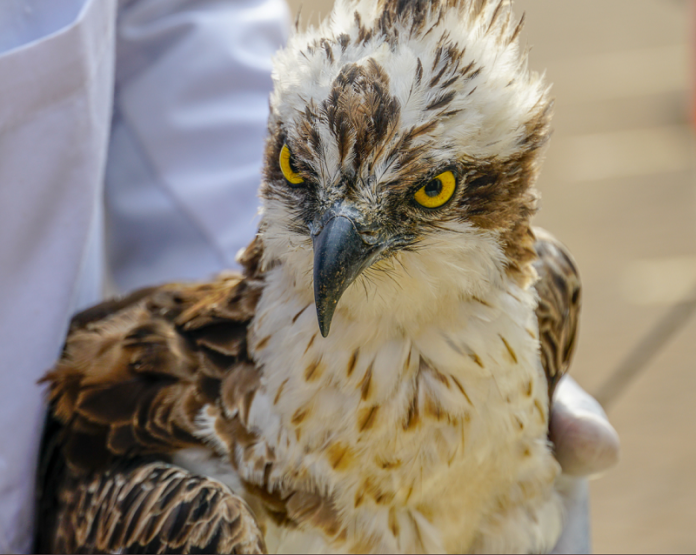 The Osprey bird that was fished out of the waters of Lake Kanyaboli in Siaya County. (KBC)
The Osprey bird that was fished out of the waters of Lake Kanyaboli in Siaya County. (KBC) In a statement, Kenya Wildlife Service (KWS) Director General Paul Udoto, said the bird that was delivered to the KWS veterinary team had some bruises on its legs, had lost some weight and it seemed dehydrated.
“It will be stabilized by administering IV fluids and provided proper diet, then monitored for a few days before being released back to the wild,” Udoto said.
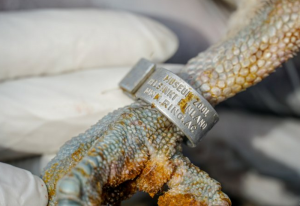 The Osprey's ring that was used to identify the bird and its origin. (KBC)
The Osprey's ring that was used to identify the bird and its origin. (KBC) Also read: Meet the little 5 found in Kenya's Maasai Mara reserve that will blow your mind
The bird’s origin was established from a reference ring on its leg, whose details show that it was ringed in Helsinki, Finland. KWS head of Veterinary Services Dr David Ndeereh said information about the bird will be shared with the East Africa Bird Ringing Association to obtain more details on the bird.
Business Insider SSA decided to go on a fun bird watching expedition to learn more about this rare commonly known as an Osprey but whose scientific name is Pandion haliaetus.
Life span
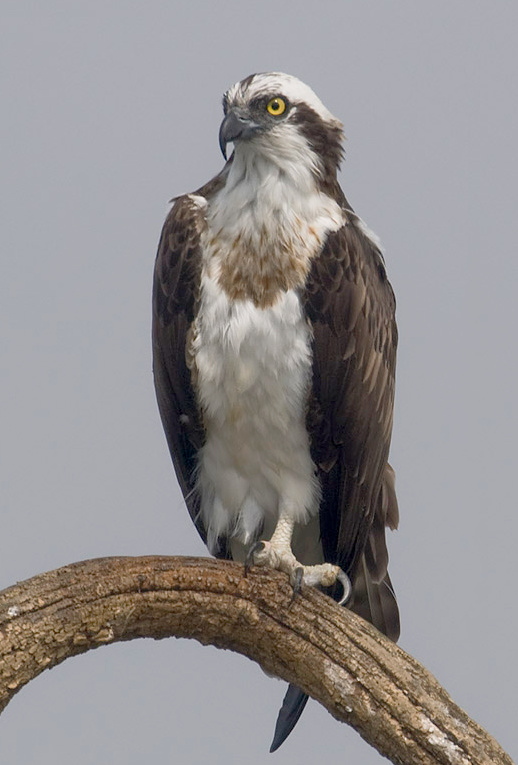 Ospreys average lifespan in the wild is 30 years. (wikipedia)
Ospreys average lifespan in the wild is 30 years. (wikipedia) Ospreys average lifespan in the wild is 30 years. An adult Osprey can grow upto 21 to 23 inches; wingspan: 5 to 6 feet and weigh 3.1 to 4.4 pounds.
They are carnivorous
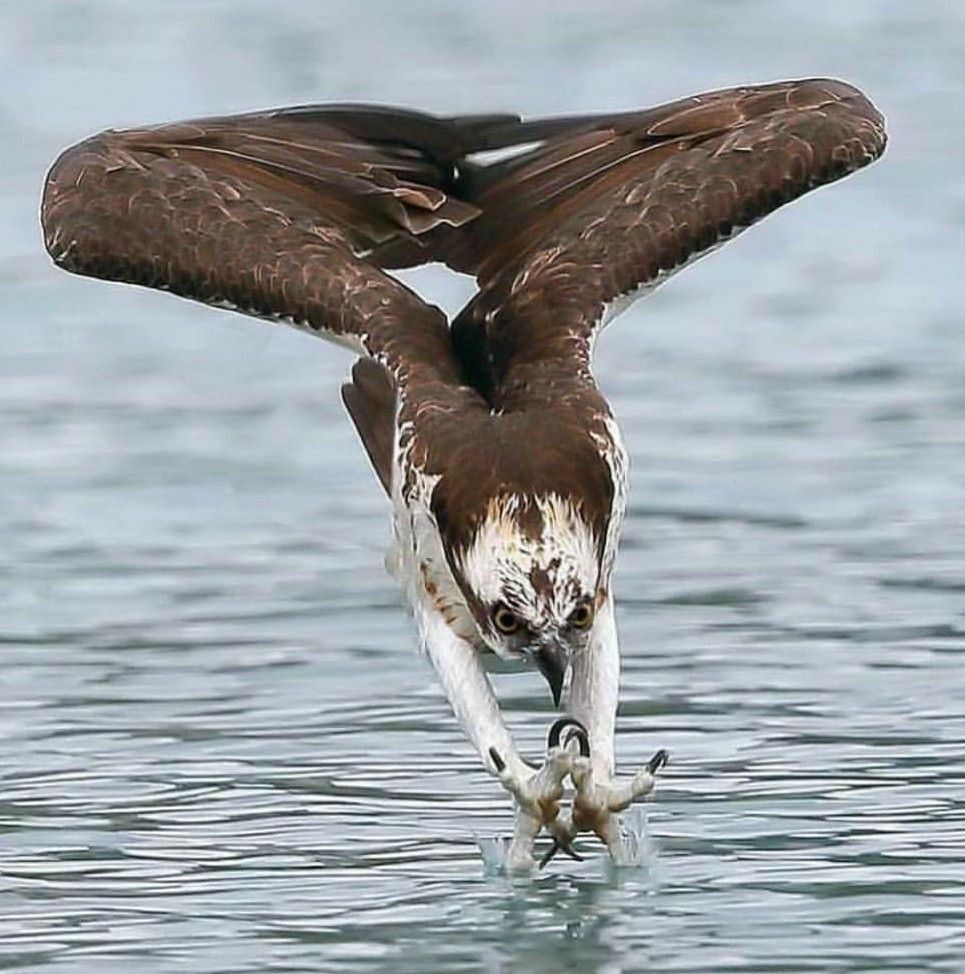 Osprey diving for a fish. (pinterest)
Osprey diving for a fish. (pinterest) Ospreys are superb fishers and indeed eat little else—fish make up some 99 percent of their diet.
It's no rocket science then why these birds are found near ponds, rivers, lakes, and coastal waterways around the world.
They are great migratory birds
 An Osprey with its chicks on a nest. (RSPB)
An Osprey with its chicks on a nest. (RSPB) According to all about birds.org, an Osprey may log more than 160,000 migration miles during its 15-to-20-year lifetime.
They breed in the north and migrate south for the winter.
Scientists track Ospreys by strapping lightweight satellite transmitters to the birds’ backs. The devices pinpoint an Osprey's location to within a few hundred yards and last for 2-3 years.
They have unique from other hawks and different from eagles
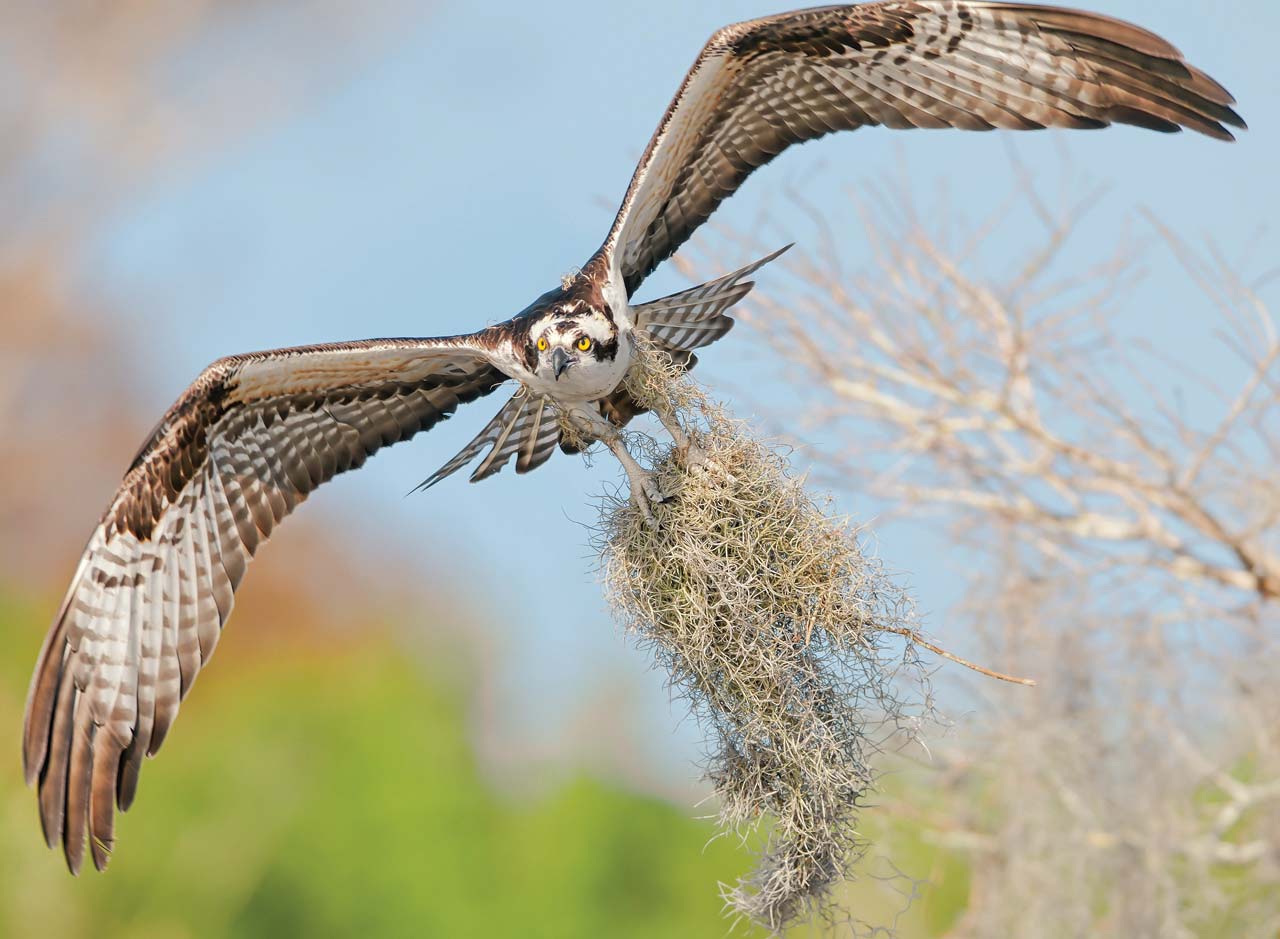 An Osprey collecting moss to build its nest. (Britannica)
An Osprey collecting moss to build its nest. (Britannica) Unlike other hawks, Ospreys have a reversible outer toe that allows them to grasp with two toes in front and two behind. Barbed pads on the soles of the birds' feet help them grip slippery fish. When flying with prey, an Osprey lines up its catch head first for less wind resistance.
Ospreys are sometimes confused with bald eagles, but can be identified by their white underparts. Their white heads also have a distinctive black eyestripe that goes down the side of their faces.
They get along with humans
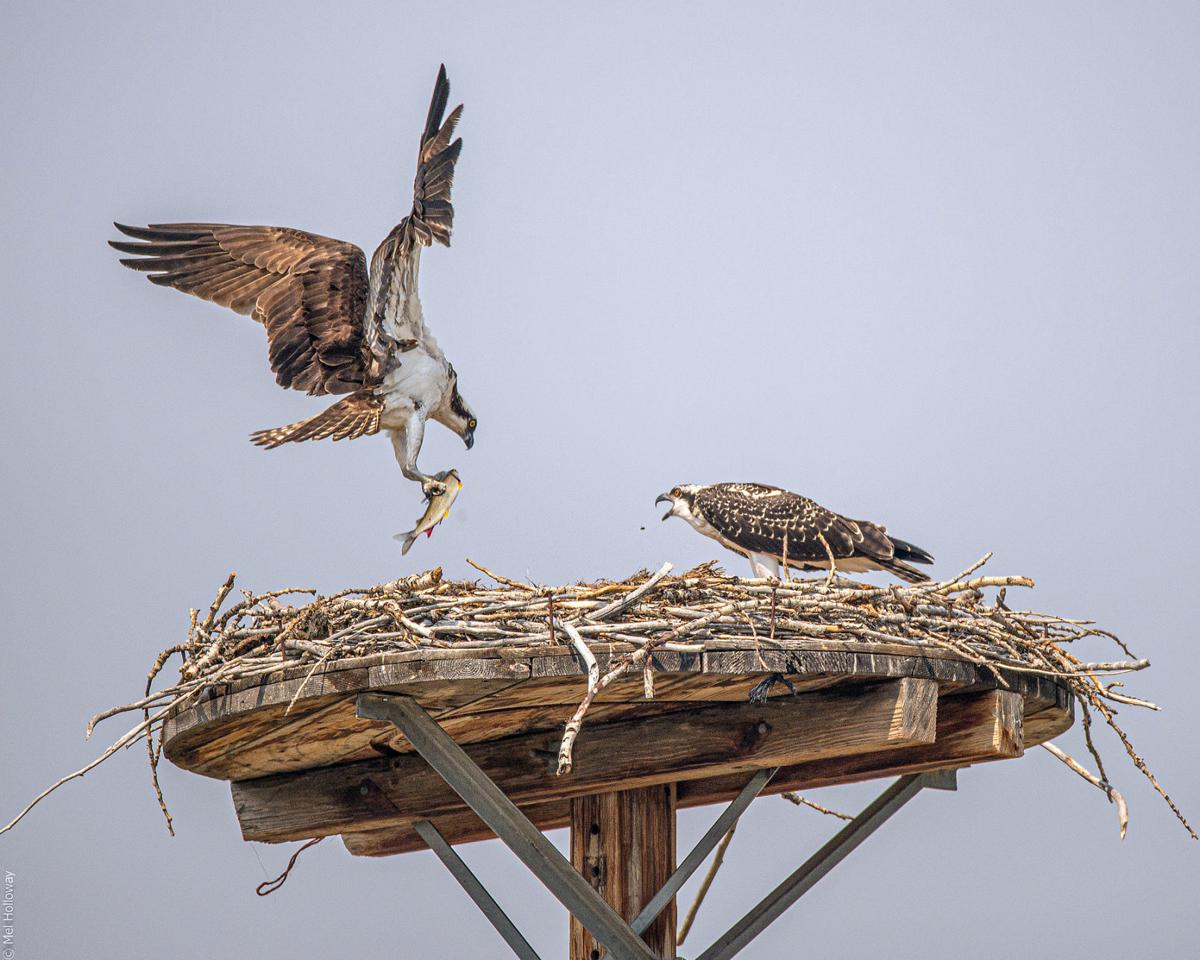 A Osprey lands in a man-made nest. (ravallirepublic)
A Osprey lands in a man-made nest. (ravallirepublic) These large, rangy hawks do well around humans and have rebounded in numbers following the ban on the pesticide DDT. The birds happily build large stick-and-sod nests on telephone poles, channel markers, and other such locations. Artificial nesting platforms are common in areas where preservationists are working to reestablish the birds.
In the past, shooting and nest destruction were some of the main threats.
Today, contamination of the birds with mercury and organochlorine pesticides, and entanglement in fishing line occur remain their main threat.
They are, however, extremely nervous of unusual activity, and hence there can be a risk of a nest being deserted following disturbance, both intentional and accidental.
Their eggs do not hatch all at once
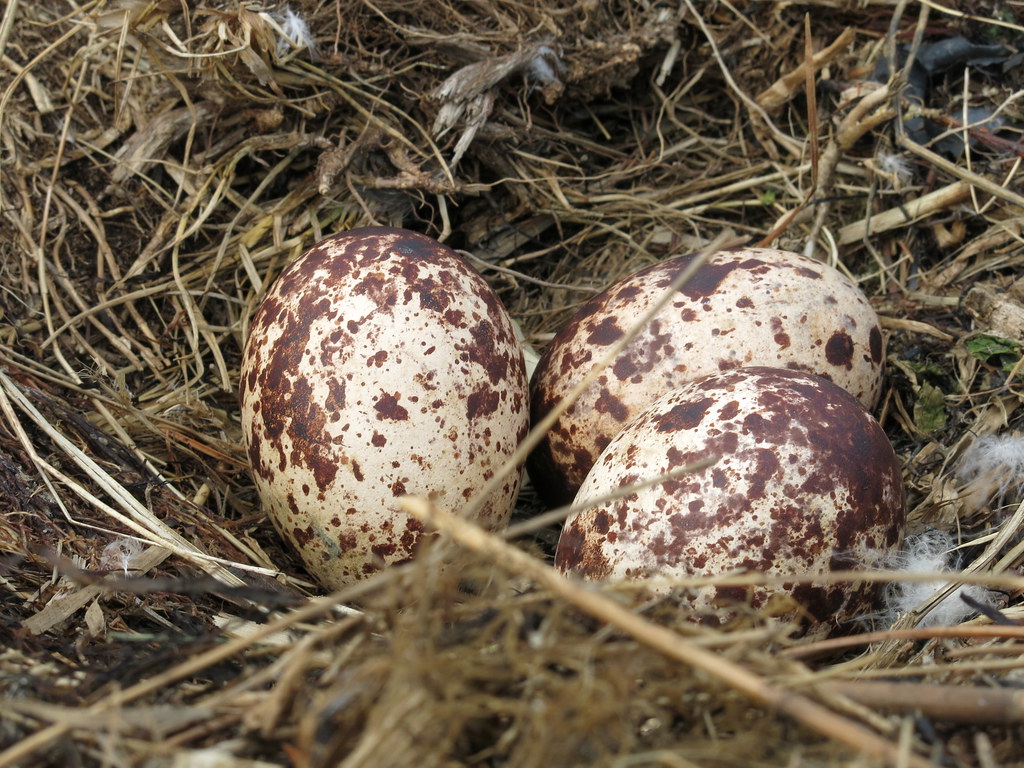 Osprey eggs. (flickr)
Osprey eggs. (flickr) They lay eggs (typically three), which both parents help to incubate.
Osprey eggs do not hatch all at once. Rather, the first chick emerges up to five days before the last one. As a result, the older hatchling dominates its younger siblings, and can monopolize the food brought by the parents. If food is abundant, chicks share meals in relative harmony; in times of scarcity, younger ones may starve to death.
Source:
Here're 6 fun facts about the rare bird that flew 6,948 kilometers from Finland to Kenya- gist culled from
pulseng



















